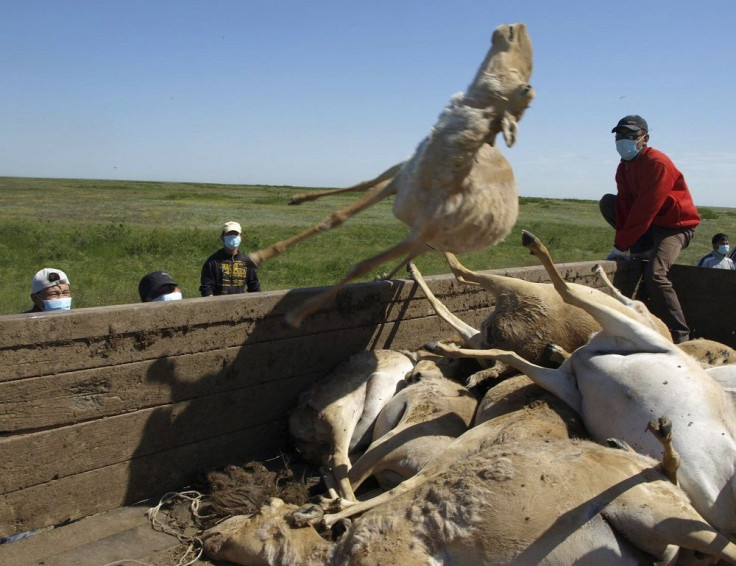Bacteria In Gut Causes Half Of Global Saiga Antelope Population Found In Kazakhstan To Die

Two types of bacteria, which are normally benign, found in the gut of the endangered Saiga antelope, have turned deadly. It has resulted in the death since May 10 of half of the world’s Saiga antelope population found in Kazakhstan.
Hours after the antelopes show symptoms such as depression, diarrhea and mouth frothing, the animals die. Since the ailment hit the antelopes during calving season, it caused the decimation of herds of the female antelope and their newborns, reports BBC.
An international team is in Kazakhstan to study the phenomenon. Richard Kock, wildlife veterinarian of the Royal Veterinary College in London who joined the team, said the animals had respiratory problems, causing it to have breathing difficulty. This caused the female adult antelopes to stop eating and become extremely depressed. After the mothers die, their calves follow within one or two days.
Experts believe something triggered the reduced immunity of the antelope to the two bacteria – pasteurelosis and clostridia – found in the gut of all the dead animals they examined. One theory is the changing climate as the animals were exposed to a very cold winter, followed by a wet spring which could have affected the antelope’s immune system and made it more vulnerable to the bacteria.
Kock said, “Epidemiologically, you cannot get a directly transmitted disease to kill a whole population in seven days … I’d say it’s a polymicrobial disease,” quotes Nature.
The Saiga antelope, which is known for coping with extreme temperatures, are found on Kazakhstan’s central Asian steppes. It is as big as a large sheep and its population, spread from Britain to China, used to be in the millions. When the Soviet Union collapsed, its headcount dwindled to as low as 50,000 due to over hunting.
According to Nature, the animals have been reduced to four discrete populations over the past few centuries. One is in Kalmykia in southwest Russia and three are in Kazakhstan. There is a separate subspecies in Mongolia, the Saiga tatarica mongolica, while the one in Russia and Kazakhstan is the Saiga tatarica.
Steffen Zuther, head of the Association for the Conservation of Biodiversity in Kazakhstan, said that in the last two days, 80 percent of the calving population he was studying had died. Within two weeks, the whole herd perished.
The incident cause global population of the Saiga antelope to decrease to 120,000 from 250,000. Although there were incidents of Saiga antelope die-offs in 1984, 2010 and 2012, this year’s incident is the worse since it halved the animal’s global population.
To contact the writer, email: vittoriohernandez@yahoo.com






